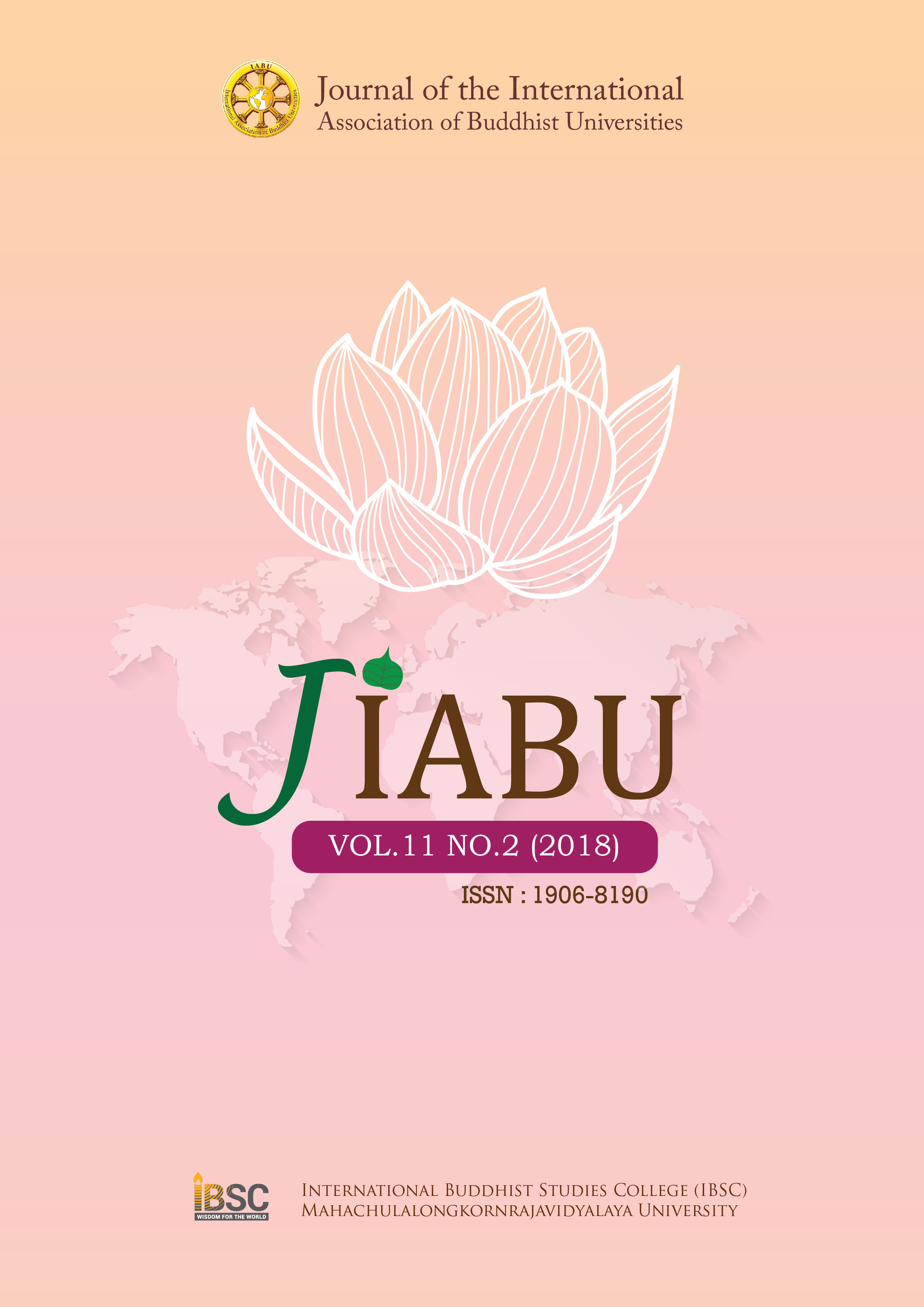A Study of Physical Cleanliness Management in Theravada Buddhism
Main Article Content
Abstract
All the teaching of the Buddha can be summed up that to purify our mental and
physical defilements. It stressed the purification of purity of action, purity of speech
and purity of mentality. And the other form of cleanliness is concerning with the cleanliness
of surroundings or environments. In this article, the researcher would like to emphasize the purification of the body and the cleanliness of the environment or hygiene, as it directly
supports the development of the spiritual path.
The results of the study indicate how the general concept of physical cleanliness
correlates to other sources appearing in Buddhist texts; either in the Buddhist Canonical
texts or in the other Buddhist texts. These were analyzed for a better understanding in a
systematic and academic way. The researcher studies in detail how practitioners’ practice
can be affected and provides an introduction to Theravāda Buddhist teachings. Those who
follow the various practices associated with the Buddha’s teaching not only cultivated
moral strength and selflessness, but also perform the highest service to their fellow human
beings. They practice physical cleanliness and gradually develop themselves through good
external actions that become the foundations of inner development up until the attainment
of the ultimate goal of life: Nibbāna. In the modern context, the Centers are revitalizing
the practice of physical cleanliness as a means of solving problems in the family, school,
society, and the world.
Article Details
Views and opinions expressed in the articles published by The Journal of the International Association of Buddhist Universities (JIABU), are of responsibility by such authors but not the editors and do not necessarily reflect those of the editors.
References
Vi. III. 25.
Thanissaro, Bhikkhu. Buddhist Monastic Code, vol.2, (Metta Forest Monastery, U.S.A, 2001), p.101
Ñanamoli, Bhikkhu. (tr.), The Path of Purification: (Visuddhimagga), (Kandy: Buddhist Publication Society, 1997), p.124
Bhikkhu Ariyesako, The Bhikkhus’ Rules A Guide for Laypeople The Theravadin Buddhist Monk’s Rules (Australia: Sanghaloka Forest Hermitage 1998), p.75.
Bhikkhu Sujato, Bhikkhuni Vinaya Studies, (Australia: Sanipada Publication, 2009), p. 20.
Vi. VII. 10. 1.
Ann Heirman & Mathieu Torck, A Pure Mind in a Clean Body: Bodily Care in the Buddhist Monasteries of Ancient India and China, (Gent Belgium, Academia Press, 2012), p.50.
ibid. p.67.
In Thailand, the iron bowl has been almost superseded by the bowl made from stainless steel. EV reports that a medium-sized bowl is about 22.5 cm. in diameter.
Bhikkhu Ṭhāṇissaro, The Buddhist Monastic Code, Vol. II. (California, Metta Forest Monastery, 2001), p. 14.
Bhikkhu Ṭhāṇissaro, The Buddhist Monastic Code, Vol. II. (California, Metta Forest Monastery, 2001), p. 41.
ibid, pp. 41-42.
Bhikkhu Ṭhāṇissaro, The Buddhist Monastic Code, Vol. II. (California, Metta Forest Monastery, 2001), p. 39.
Bhikkhu Ṭhāṇissaro, The Buddhist Monastic Code, Vol. II. (California, Metta Forest Monastery, 2001), p. 39.
M. I, 10; A. III, 387.
Bhikkhu Ṭhāṇissaro, The Buddhist Monastic Code, Vol. II. (California, Metta Forest Monastery, 2001), p. 495-504.
T.W. Rhys Davids and Hermann Oldenberg (trs.), Vinaya Texts: Sacred Books of the East, Vol. 17, (Oxford: The Clarendon Press, 1881), pp. 32. 33. 57.
M. I, 457.
D. II, 267.
Thag. 398.
Bhikkhu, Bodhi (tr.), The Connected Discourses of the Buddha (Saṃyutta Nikāya), (Boston: Wisdom Publication, 2000), p. 352.
Sn. 207-221; A. I, 273.
M. I, 161.
M. II, 122; D. I, 50.
S. V, 369.
Lily de Silva (ed.), Buddhist Perspective on Ecocrisis: The Buddhist Attitude towards Nature, (Kandy: BPS, 1987), pp. 9-29.
Bhikkhu Ṭhāṇissaro, The Buddhist Monastic Code, Vol. II. (California, Metta Forest Monastery, 2001), pp. 490-494.


